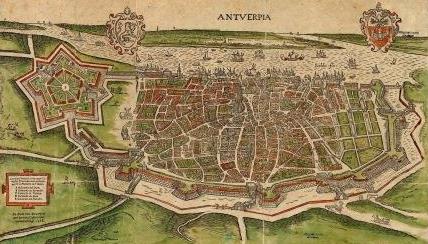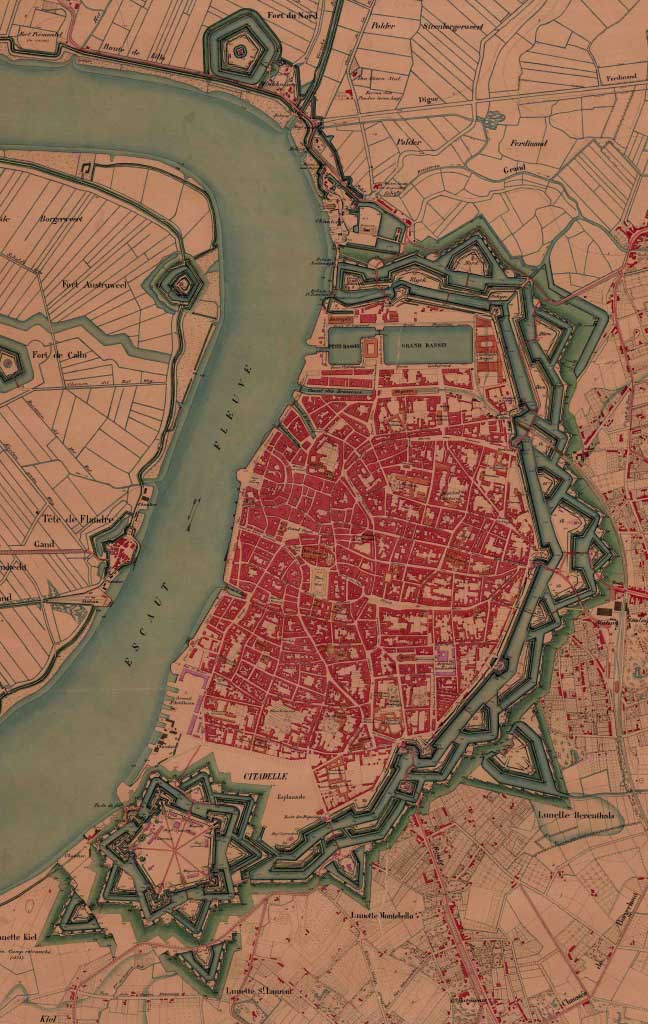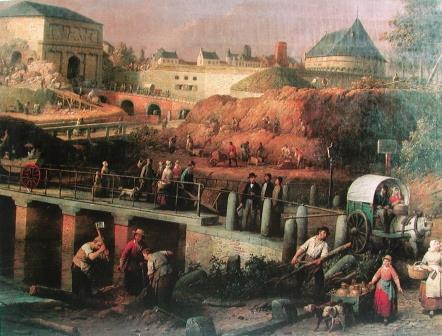Spanish ramparts
The early sixteenth century saw the development of several new war techniques and arms. As a result, the late-medieval fortification around Antwerp was no longer deemed sufficient. Emperor Charles V ordered the Italian engineer Donato di Boni to build a wall around the city with bastions. The new Spanish ramparts were built in the period from 1542 until 1553 and comprised five monumental gates, eight sections of wall and nine bastions: pentagonal bulwarks which jutted out of the wall.
All the walls were built in brick and clad with white stone from Glabbeek. The walls were ten metres high and had a parapet that was maximum two metres high. At the time, the Spanish ramparts were considered one of the most modern defences and even today, they have special cultural-historical value. At the end of the sixteenth century the citadel of Antwerp was incorporated in the Spanish ramparts on the south side. The Duke of Alva built the citadel in 1567.
In the nineteenth century the Spanish ramparts were no longer useful. When the Brialmont city wall was built in 1850, the old ramparts prevented future development. As a result, the decision was made to demolish them in 1860. Nothing was preserved above ground level but the complete blueprint was preserved below ground. When the Leien were rebuilt, the archaeologists were able to study the remnants of these imposing ramparts for the first time.






